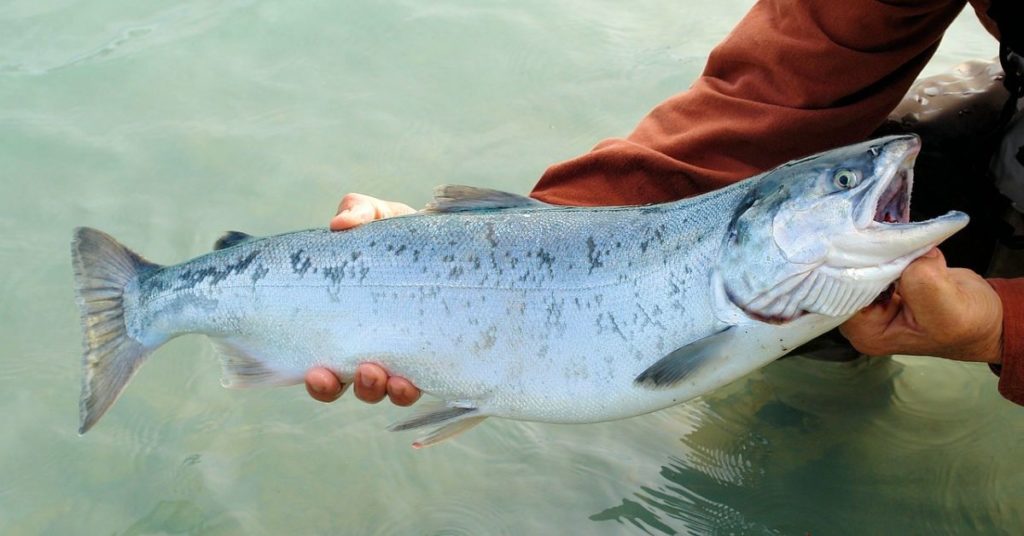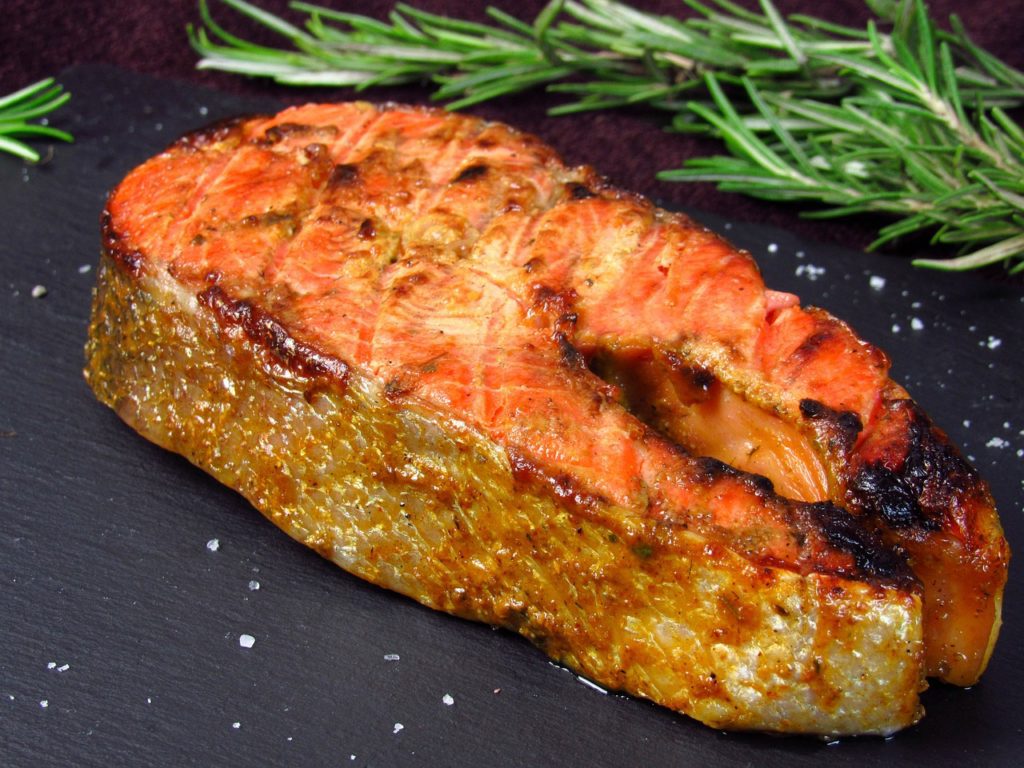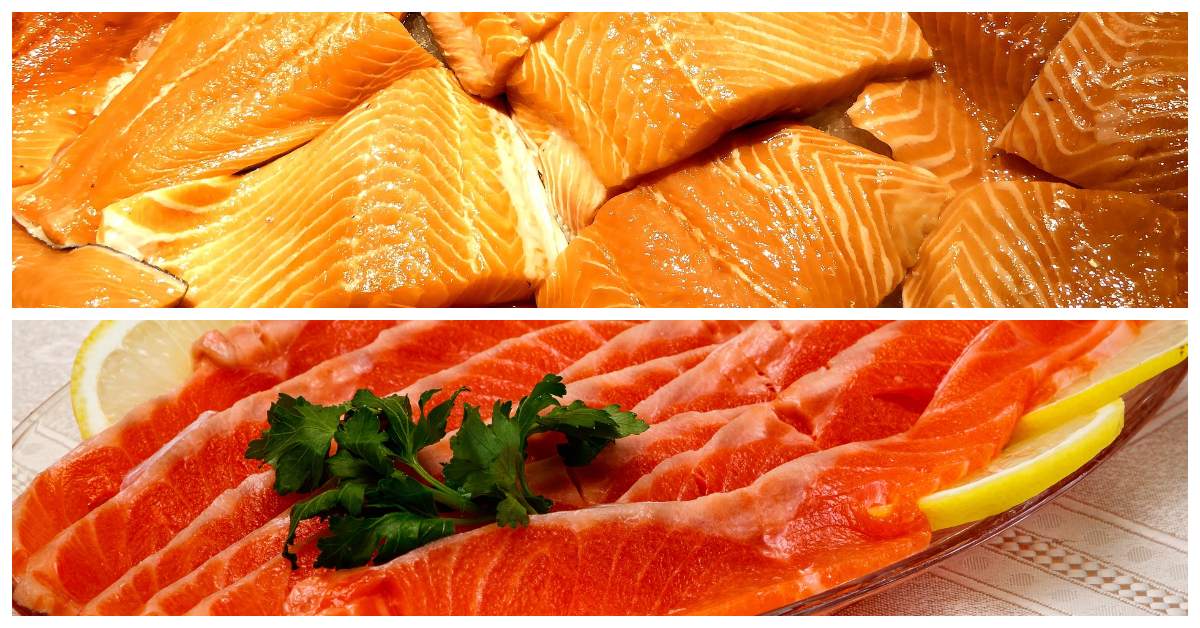Whether you’re getting ready to fish for salmon or want to choose a nutrient-rich fish for your family, you might want to know the differences between red salmon vs. pink salmon. Obviously, the most significant difference between these fish is their color, although they also have slight variations in taste, texture, and habitat.
The Formal Names of Pink and Red Salmon
Pink and red salmon are two different species. In the case of pink salmon, they’re both a species and can describe the color of several other salmon species. Nevertheless, both pink and red salmon belong to the genus Oncorhynchus.
The red salmon’s formal name is Sockeye salmon. These fish turn their famously bright red color when they enter freshwater streams to spawn. During this time, their heads remain a grayish-brown color.
In contrast, pink salmon has light pink meat and is typically the Pacific salmon variety. Furthermore, some pink salmon have a pinkish stripe on their lower side that fades into their white underbelly.
That said, the most famous pink salmon goes by “humpback salmon,” given the hump they develop during their spawning season.
What Gives Salmon Their Color?
Sockeye salmon get their red color from eating krill in the ocean, which is a tiny shrimp-like creature. However, they don’t turn truly red until they leave the sea to spawn. Until then, they have a silver-colored body.
Once red salmon moves into freshwater to spawn, their inner meat and outer scales turn a brilliant reddish-orange color. This color change aims to help the Sockeye salmon attract a mate.
In contrast, pink salmon also eat krill, which helps give them an internally pink color. However, their evolutionary process doesn’t have them using color during their freshwater spawning journey. As a result, pink salmon will never have meat as red as Sockeye salmon.

Habitats of Red and Pink Salmon
When comparing red salmon vs. pink salmon, both of these fish have a similar habitat. Both are born in freshwater and move to saltwater before returning to the same freshwater where they were born to spawn, completing their lifecycle.
Furthermore, you can find both red and pink salmon in Alaska.
Red Sockeye salmon typically is in abundance in the Bristol Bay area of Alaska. There, they have a wealth of freshwater rivers and lakes to choose from, along with saltwater bays once they’re ready to make their way to the sea.
Pink salmon tend to congregate in Southeast Alaska because of the variety of relatively short streams present that connect with the ocean.
The setup of these streams is particularly beneficial for pink salmon, given that they move immediately to the ocean after hatching. Pink salmon also enjoy Southeast Alaska’s relatively mild climate and lots of rainfall that feed its rivers.
In contrast, red Sockeye salmon often spend over a year living, growing, and feeding in their freshwater habitat before transitioning to the sea.
Are Red or Pink Salmon More Abundant?
There’s a greater quantity of pink salmon than red salmon. As a result, pink salmon is a more economical option than red salmon when purchasing it from a fish market or store.
Nevertheless, red salmon isn’t rare. On the contrary, it’s the second most abundant salmon that lives in the Pacific Ocean.
Red Sockeye salmon also offer more meat per fish than pink salmon; the average adult weight is six pounds. In contrast, pink salmon average four pounds when fully grown.
Price Differences Between Red and Pink Salmon
We’ve established that red salmon has a higher price point than pink salmon, and a part of this undoubtedly has to do with the Sockeye salmon being less abundant than pink salmon.
However, history may also play a small role as well. Prior to advanced boat refrigeration practices, red salmon would arrive at ports in better condition than pink salmon.
As a result, some people may still believe that red salmon are the hardier—and therefore superior—salmon species.
Taste Differences of Red and Pink Salmon
When learning about the differences between red salmon vs. pink salmon, your motivation might be to know which tastes better.
These fish have a notable difference in taste and texture, with the red salmon having a richer, more “salmony” flavor than pink salmon. Furthermore, red salmon is firmer, whereas pink salmon has a softer texture.
As a result, pink salmon is ideal for use in the following dishes:
- Salads
- Fishcakes
- Soup
On the other hand, red salmon pairs well with dishes where you want to use more intense flavors. It also holds up sturdier with cooking styles such as grilling, although you can use red and pink salmon with any kind of cooking technique.

In blind taste tests, most people indicate that they slightly favor the taste of pink salmon over red salmon.
Situations that Make Red Salmon Lose Their Color
Fresh red Sockeye salmon meat is unmistakable when you place it next to pink salmon. However, if you cook red salmon, it loses some of its redness, turning a deep pink color instead.
Canning is another situation that will turn red salmon into a pink color.
Nevertheless, cooking and canning pink salmon also causes it to lose some of its pink colors. Therefore, red salmon will always appear deeper in color than pink salmon when you cook or can both of them.
Similarities Between Pink and Red Salmon
Now that we’ve looked at pink and red salmon color differences, it’s time to explore how these fish are similar.
By eating pink or red salmon, you’ll receive many of the same nutritional benefits, including:
- Protein
- Omega-3 fatty acids
- Vitamin D
Unlike tuna, wild-caught salmon has negligible amounts of mercury. For these reasons, eating nutritionist-recommended portions of high-quality salmon may help reduce the chances of strokes and heart attacks.
Unfortunately, both red and pink salmon also suffer from the same environmental stresses. Pollution, habitat destruction, and diseases that farmed salmon transfer to wild salmon are all threats these fish face.

